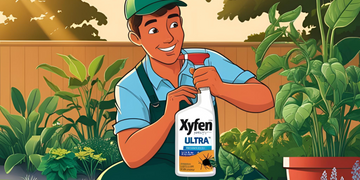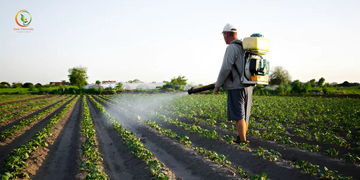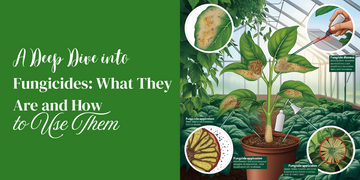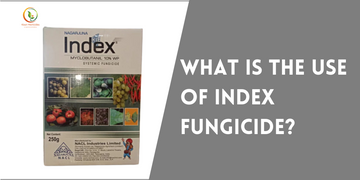Selecting the proper insecticide is vital in pest management for defending crops and guaranteeing strong yields. Kisan Pesticides' leading product, Xyfen Ultra Insecticide, is well known for its ability to control whiteflies and mites. Farmers, as well as gardeners, face serious pest management difficulties. Effective insecticides are more in demand now than ever before, given the growing ubiquity of resistant bugs. A strong formulation produced by Kisan Pesticides, Xyfen Ultra Insecticide, is one potential answer. This insecticide is quite famous for shielding crops from destructive insects, hence improving yields and plant health. A major concern, though, is whether Xyfen Ultra Insecticide would work on every type of plant.
This article will study Xyfen Ultra Insecticide's components, power, and constraints. We will also discuss which plants it is most appropriate for and whether it can be universally applied across all crops.
What is Xyfen Ultra Insecticide?
Formulated as a suspension emulsion (SE), Xyfen Ultra Insecticide is a strong mix of Pyriproxyfen (8%) and Diafenthiuron (30%). Through contact, consumption, and vapor action, this dual-action chemistry offers thorough pest management. Its special characteristics consist of:
-
Rapid Knockdown Effect: Stops pest activity fast.
-
Long-lived control efficacy for about 12–15 days.
-
The three-way mechanism enables complete coverage through translaminar activity that targets pests.
-
Multiline stage management: Controls insects at all levels—eggs, nymphs, and adults.
These characteristics make Xyfen Ultra an excellent option for farmers wishing to save their crops from extreme pest invasions.
Knowledge of Xyfen Ultra Insecticide
Compounded nature of things
Xyfen Ultra Insecticide is a blend of two strong active components:
- An insect growth regulator (IGR) stops insects from maturing into reproductive adults, therefore controlling the next pest levels. Swap 8% equivalent pyriproxyfen:
- Diafenthiuron (30%) acts on pests by blocking their energy metabolism, which results in their ultimate demise, as a general-spectrum insecticide.
- This double-action formulation helps Xyfen Ultra Insecticide fight many insect pests, particularly whiteflies and mites, which are prevalent hazards to several crops.
Mode of operation
Xyfen Ultra Insecticide works well because of its three-way mechanism of action.
- Contact Action: The sprayed solution works on pests that contact it straight.
- Consumption Action: Pests that eat plant parts treated with Xyfen Ultra experience its poisonous consequences.
- In addition to killing bugs, the insecticide functions as a fumigant, therefore managing pests not explicitly exposed to the spray.
- It guarantees thorough pest control and lengthens the time crops are under protection.
Xyfen is highly recommended for use.
Crops like chilies are most advised for Xyfen Ultra since they have common whitefly and mite problems. It works especially well in keeping the following under control:
- Whiteflies: They spread diseases like Chili Leaf Curl Virus and are famous for causing leaf curl.
- Mites curl and wrinkle leaves, therefore causing bad crop health.
- The product is used at particular times of growth of crops to optimize its effectiveness:
- First application: 4045 days after transplanting.
- Second application: 65–70 DAT.
- These calculated timings guarantee ideal pest management and improve the potential of crop yield.
Can Xyfen Ultra Be Used on All Plants?
Xyfen Ultra, though extremely efficient, is not appropriate for every species. This is why:
1. Target-specific formulating
Designed to attack particular pests like whiteflies and mites, the chemical makeup of Xyfen Ultra is meant to. These pests are not usually seen on vegetables like chilies, however. Using this insecticide on nontarget plants may not yield the desired results or could harm the plants. The primary pests controlled by Xyfen Ultra Insecticide are:
- White flies.
- Mites.
- Thrips somewhat
You might have to think about a different insecticide best matched for those particular pests if other pests like aphids, caterpillars, or beetles affect your crops.
2. Trials for particular plants
Xyfen Ultra has undergone thorough testing with chili plants to confirm its safety and effectiveness. Other species, however, may not have been tested, thus making its use on them applicable. Kisan Pesticides has tailored Xyfen Ultra Insecticide for the following crops:
- Pepper
- Cotton is not correct.
- Tomato
- Brinjal All Rounder 29
- Other Sensitive Solanum species
The pesticide eliminates whiteflies and mites that are especially sensitive to the chemical. But this should not be used on crops that are blanketed on the label. Use of the insecticide on unlabeled crops may kill them or achieve no pest control on them.
3. Likely plant toxicity
If used on non-permitted crops, insecticides may cause phytotoxic damage. Failure to provide reasonable instruction may cause harm to other crops when Xyfen Ultra is misused. Phytotoxicity is the harmful impact of a chemical’s effect on the health of plants. Some insecticides are known to bring forth terrible reactions on sensitive crops, including leaf burn, stunted growth, or dying animals, especially Xyfen Ultra Insecticide.
For example, some agricultural products include
- Leafy vegetables (cabbage, spinach, lettuce)
- Ornamental Lies and orchids.
- Grapes and apples, for instance
could be more reactive to the active compounds of Xyfen Ultra Insecticide. Without manufacturer consent and thorough testing, using the insecticide on those plants is inadvisable.
4. Regulatory legislation
Agricultural goods like Xyfen Ultra are frequently authorized for application on certain crops according to government directives. Every pesticide, including Xyfen Ultra Insecticide, comes with a label that specifies that utilizing it outside these guidelines could not meet agricultural expectations.
- Approved cultivations
- Levels of application
- safety measures
Using the insecticide on unapproved crops might bring about safety and legal concerns. Before applying the product on any plant, always verify Kisan Pesticides' official instructions.
Best Practices for Using Xyfen Ultra Insecticide
For the proper and safe use of Xyfen Ultra, here’s what to observe and follow:
- Inspect the product carefully: Check the label for recommended crops associated with that insecticide as well as instructions for its use.
- Consult a Professional: If you are still unsure about the use of Xyfen Ultra on a particular plant, consult an agronomy or farming authority.
- Carry out Primary Test: Test a crop before using it on a larger scale if you do not want to incur adverse consequences from using the insecticide on large areas.
- Follow the Instructions: There are set guidelines to be observed that will assist in the effective mixing of Xyfen Ultra Insecticide.
- Use Appropriate Equipment: A knapsack sprayer with a hollow conic nozzle is ideal for even coverage.
What Makes Kisan Pesticides Different?
Kisan Pesticides, the manufacturers of Xyfen Ultra, understand that agricultural solutions can’t be met without offering innovative pest control. Kisan Pesticides utilizes over twenty years of production know-how to develop high-performing insecticides that safeguard farmers’ crops while preserving nature’s balance.
Conclusion
Though Xyfen Ultra Insecticide is an effective tool for controlling mites and whiteflies in chili crops, it cannot be applied universally. According to Kisan Pesticides guidance, its use should be limited to suggestions regarding its application plants. Farmers looking for dependable pest control options customized to their particular needs have to consult agricultural experts or reference product notes.
Following these guidelines helps you to get the most out of Xyfen Ultra while also guaranteeing the safety and health of your plants!




